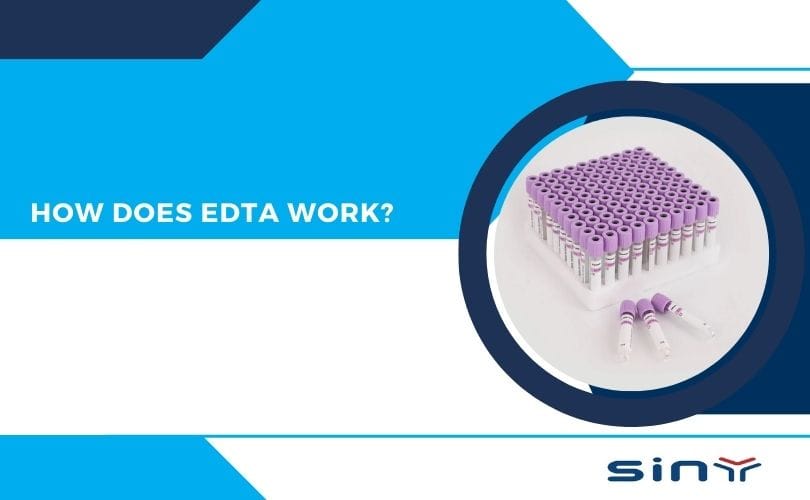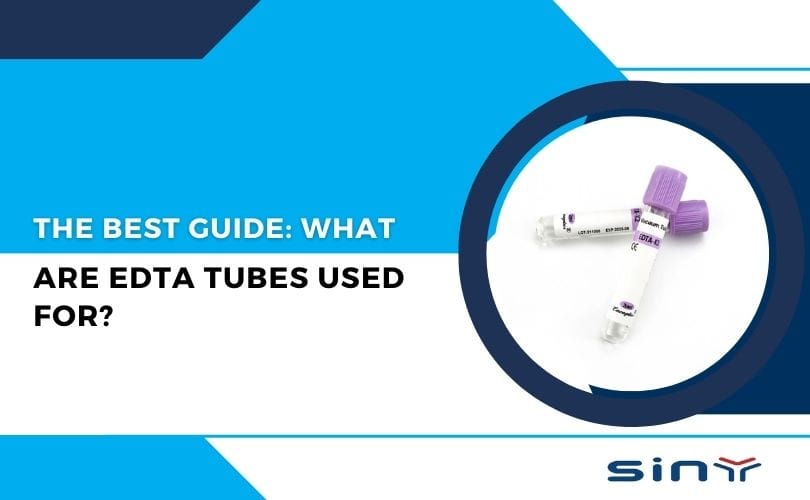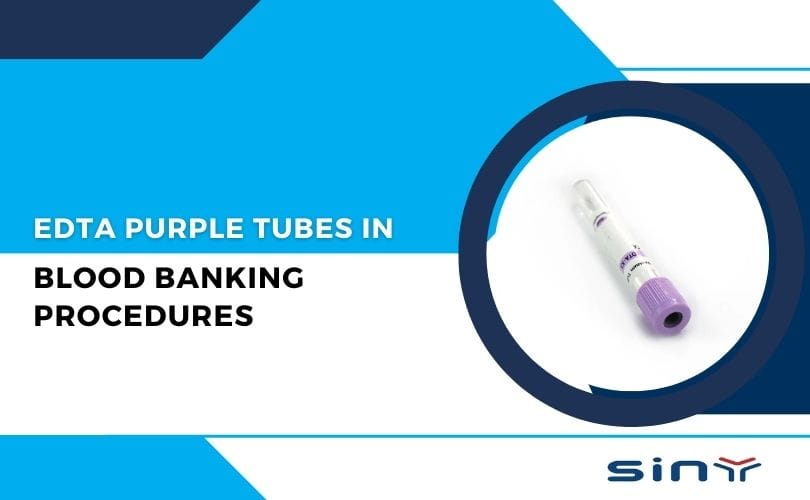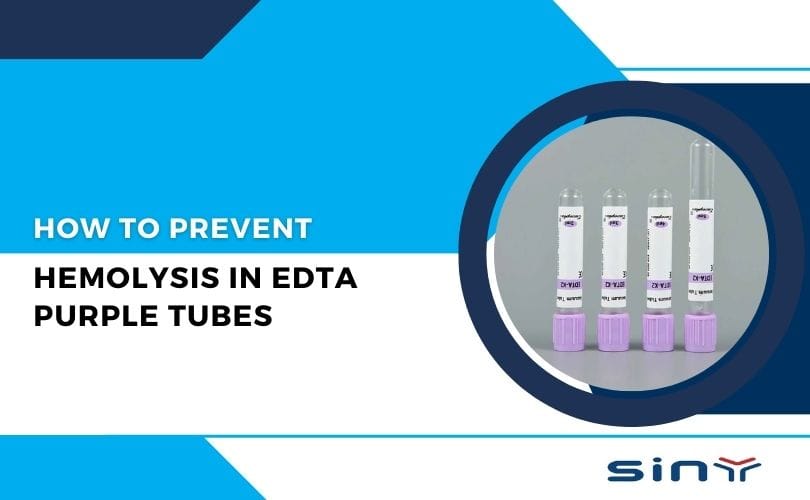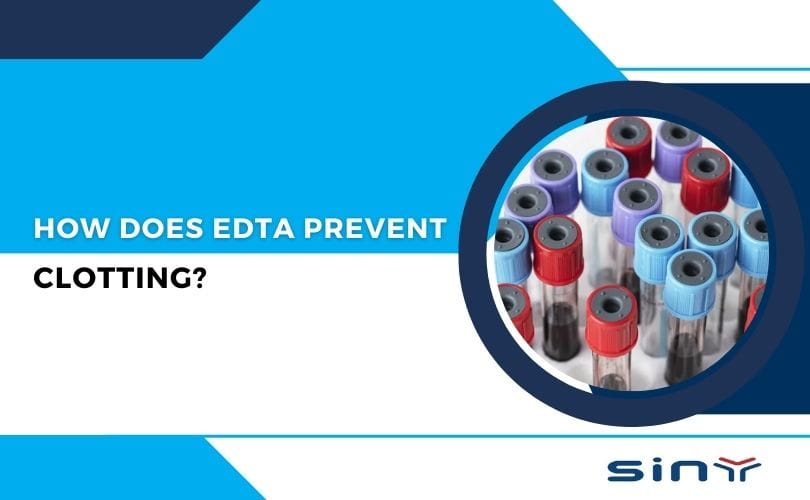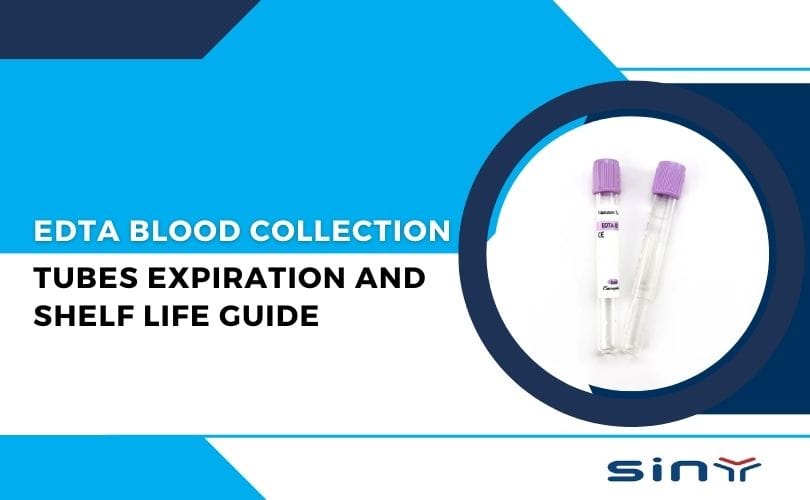In the fields of clinical diagnostics and laboratory medicine, obtaining high-quality, non-clotted blood specimens is the primary prerequisite for accurate analysis. Among the many reagents used for in vitro anticoagulation, EDTA (Ethylenediaminetetraacetic acid) has become one of the most widely used anticoagulants due to its efficient and reversible properties, especially its outstanding performance in hematology testing. This article will elaborate on the mechanism of action of EDTA Work from a chemical perspective and discuss its key applications in the medical field.
What is an EDTA Tube?
An EDTA tube is a blood collection tube that contains Ethylenediaminetetraacetic acid (EDTA), a potent anticoagulant. EDTA is widely used in clinical laboratories to prevent blood from clotting, ensuring that blood samples remain in their liquid state for accurate analysis. These tubes are particularly crucial for tests like the Complete Blood Count (CBC), white blood cell differential, and reticulocyte count.
The Core Mechanism of Action of EDTA
The anticoagulant function of EDTA is based on a purely chemical process known as chelation. EDTA is an aminopolycarboxylic acid, which means it can form multiple coordination bonds with a metal ion, creating a stable, soluble, ring-like complex called a chelate.
Blood coagulation is a complex, enzyme-driven chain reaction involving multiple clotting factors, known as the coagulation cascade. In this process, calcium ions (Ca²⁺) play an indispensable role as a cofactor. Calcium is essential for the activation of several coagulation factors, particularly prothrombin (Factor II) and Factors VII, IX, and X. Without free calcium ions, several critical steps in the coagulation cascade are effectively inhibited, preventing the entire process from initiating or completing.
The mechanism of EDTA targets this specific step:
- High-Affinity Binding: When blood is drawn into a tube containing EDTA, the EDTA rapidly dissolves in the plasma. Due to its extremely high affinity for divalent cations, especially Ca²⁺, it preferentially reacts with the free calcium ions in the plasma.
- Formation of a Stable Chelate: An EDTA molecule binds with a calcium ion to form a highly stable EDTA-Ca²⁺ complex.
- Sequestration of Functional Calcium Ions: Through this reaction, the functional calcium ions required to initiate coagulation are effectively “isolated” or “sequestered,” making them unavailable to participate in the coagulation cascade.
- Achieving In Vitro Anticoagulation: Due to the absence of this critical cofactor (calcium ions), the coagulation cascade is fundamentally blocked, and the blood specimen remains in its original liquid state in vitro for an extended period.
Clinical Applications: The Role and Standards of EDTA Anticoagulant Tubes
Due to its excellent ability to preserve blood cell morphology, EDTA collection tubes hold a central position in clinical laboratories.
- The Gold Standard for Hematology Analysis: For hematology tests such as the Complete Blood Count (CBC), white blood cell differential, and reticulocyte count, EDTA is the preferred anticoagulant recommended by the International Council for Standardization in Haematology (ICSH). It effectively prevents platelet aggregation and maximally preserves the morphological integrity of red and white blood cells, ensuring accurate cell analysis.
- Applications in Molecular Diagnostics: EDTA is also suitable for specimen collection in molecular diagnostics because it inhibits the activity of nucleases (e.g., DNase), thereby protecting the DNA in the sample and ensuring the accuracy of genetic amplification tests, such as PCR.
- Choice of EDTA Salt (K2 vs. K3): In clinical practice, potassium salts of EDTA are primarily used, namely K₂EDTA (dipotassium salt) and K₃EDTA (tripotassium salt). The ICSH recommends the use of K₂EDTA. This is because K₂EDTA is typically spray-dried onto the interior surface of the tube, minimizing the dilutional effect on the specimen. In contrast, K₃EDTA is often in liquid form and can cause a slight dilution of the blood sample.
Other Medical Applications of EDTA
EDTA’s chelating ability extends beyond laboratory anticoagulation and has significant value in clinical therapy:
- Treatment for Heavy Metal Poisoning: Clinically, EDTA (often as its calcium disodium salt, CaNa₂EDTA) is used as an antidote for lead or other heavy metal poisoning. Administered via intravenous infusion, it binds with toxic heavy metal ions in the body to form stable, water-soluble chelates, which are then rapidly excreted from the body via the kidneys.
- Treatment of Hypercalcemia: In certain critical situations, EDTA can be used to treat life-threatening acute hypercalcemia. The principle is the same: to rapidly chelate excess calcium ions in the blood.
The Importance of Standard Operating Procedure: Ensuring Thorough Mixing
To ensure the full anticoagulant effect of EDTA Tube, a standard operating procedure is crucial for use after blood collection. Immediately after the specimen is collected, the tube must be gently inverted 8-10 times. This step is designed to ensure complete and uniform contact between the EDTA additive on the tube wall and the blood specimen, thereby achieving immediate and thorough anticoagulation of the entire sample and preventing the formation of microclots due to inadequate mixing.
Summary
In summary, the working principle of EDTA work is based on its chemical properties as a chelating agent. By forming a stable complex with calcium ions in the blood, it removes a critical cofactor required for the coagulation cascade, thereby achieving effective in vitro anticoagulation. Its central role in preserving blood specimen quality and ensuring the accuracy of hematological and molecular diagnostic tests makes it an indispensable tool in modern laboratory medicine.
For more information on EDTA tubes and their applications, visit EDTA Tube. Explore our range of products, including the Purple Top Blood Collection Tube and K2 EDTA Blood Collection Tubes. Learn more about what EDTA tubes are and how they work and discover our full range of EDTA tubes for blood collection.
For further insights, watch our informative videos on YouTube and explore our products on Made-in-China.
Feel free to contact us for any queries or to learn more about our about us page.
FAQs
1. Why are EDTA collection tubes typically purple or lavender?
This is an internationally accepted color-coding standard designed to help healthcare professionals quickly and accurately identify collection tubes with different additives, thereby preventing specimen collection errors. Purple/lavender is specifically designated for tubes containing an EDTA anticoagulant, just as light blue caps indicate sodium citrate (for coagulation tests) and gray caps indicate sodium fluoride/potassium oxalate (for glucose testing). This standardization greatly enhances safety and efficiency in laboratory workflows.
2. What is the core difference between K₂EDTA and K₃EDTA? How should one choose?
The main differences lie in their physical state and effect on the specimen. K₂EDTA (dipotassium salt) is typically a solid powder that is spray-dried onto the inner wall of the tube. K₃EDTA (tripotassium salt) is often in a liquid form. The International Council for Standardization in Haematology (ICSH) recommends K₂EDTA, primarily because liquid K₃EDTA can slightly dilute the blood specimen (by about 1-2%), potentially leading to lower results for cell counts and hematocrit (HCT). K₂EDTA does not have this dilutional effect.
3. Can EDTA tubes be used for coagulation function tests (e.g., PT, APTT)?
Absolutely not. This is a critical point of knowledge. The purpose of coagulation tests like Prothrombin Time (PT) and Activated Partial Thromboplastin Time (APTT) is precisely to evaluate the efficiency of the coagulation cascade. EDTA’s mechanism is to remove calcium ions, which are essential for the cascade to function. Using an EDTA tube would artificially and completely block coagulation, rendering the test results invalid. Coagulation tests must be performed using a light blue-capped tube containing sodium citrate, whose anticoagulant mechanism is to reversibly bind calcium, allowing the coagulation process to be re-initiated in the lab by adding calcium back.
4. What happens if an EDTA tube is not mixed properly after blood collection?
If mixing is insufficient, the blood will not have uniform contact with the EDTA on the tube wall, which can lead to the formation of microclots that may be invisible to the naked eye. These microclots can trap platelets and white blood cells, leading to seriously inaccurate instrument counts (e.g., pseudothrombocytopenia). Furthermore, these clots can clog the fine probes and tubing of sophisticated hematology analyzers, causing instrument failure and testing delays. Therefore, gentle inversion 8-10 times immediately after collection is a critical step to ensure specimen quality.
5. Is EDTA safe for humans?
The amount of EDTA used in blood collection tubes is extremely small and is intended solely for in vitro specimen processing; it does not enter the patient’s body and is therefore completely safe in this context. When used as a drug for treating heavy metal poisoning (chelation therapy), EDTA is administered under strict medical supervision via intravenous infusion with carefully calculated dosages. Its safety and efficacy have been extensively validated clinically, but it must be administered by a qualified physician.

